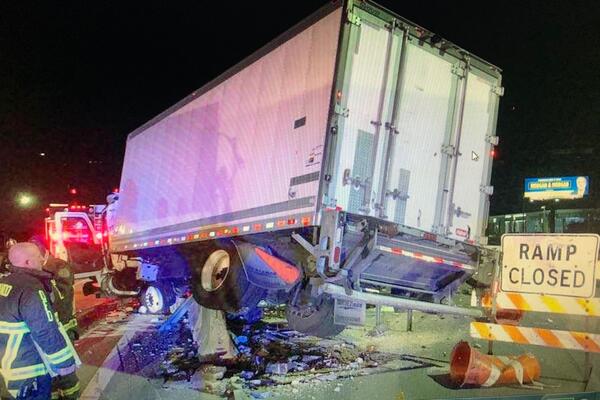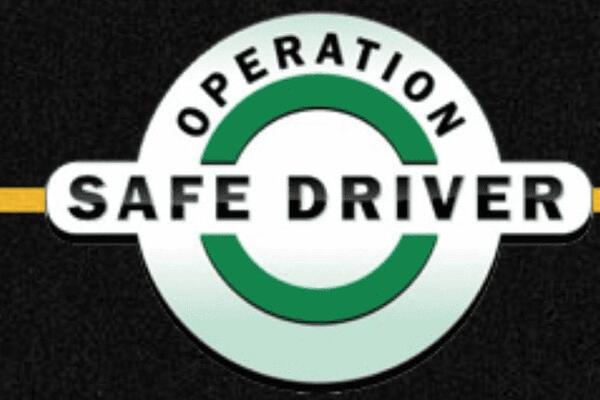As we reported last year states and provinces are reporting that there is a significant increase in the number of vehicles that are speeding at a high rate of speed and driving recklessly since the start of COVID-19. That combined with the fact that we are now in the middle of work zone season and speeding is one of the top three contributors to work zone accidents places a higher exposure of these accidents. This is an issue that you need to discuss with your professional drivers today. They need to be aware that this condition exists and will likely increase as states relax shelter in place enforcement. They will need to be on the watch for these vehicles as they drive daily.
Speeding Triples the Odds of Being Involved in an Accident
The AAA Foundation for Traffic Safety recently released a report on the results of a traffic study to identify relative risks associated with driving behaviors.
The report highlights four driving behaviors that directly impact and significantly increase the risk of a crash:
- Speeding: Driving at inappropriate speeds was associated with nearly tripling the odds of being involved in a crash or near-crash, relative to driving at appropriate speeds.
NTSB Adopts List of Most Wanted Safety Improvements for 2021-22
The National Transportation Safety Board has updated its Most Wanted List of Transportation Safety Improvements for 2021-22. The list serves as the agency’s primary advocacy tool to help save lives, prevent injuries, and reduce property damage resulting from transportation accidents. The NTSB is primarily an accident investigation agency and has no regulatory authority of its own, however.
Regarding highway transportation, the top safety objectives are:
- Implement a Comprehensive Strategy to Eliminate Speeding-Related Crashes.
- Protect Vulnerable Road Users through a Safe System Approach.
- Prevent Alcohol- and Other Drug-Impaired Driving.
- Require Collision-Avoidance and Connected-Vehicle Technologies on all Vehicles.
- Eliminate Distracted Driving.
As to speeding, the NTSB assets that speeding is typically defined as exceeding a speed limit, but it can also mean driving at the speed limit but too fast for road conditions. Between 2009 and 2018, speeding-related crashes resulted in nearly 100,000 fatalities-that is close to one-third of all traffic fatalities in the United States.
Speeding can result in loss of vehicle control, which increases both the likelihood of a crash and the severity of injuries sustained. Higher vehicle speeds lead to larger changes in velocity, which, in turn, lead to higher injury severity–that’s just basic science.
The NTSB argues that speed-limiters on large trucks, automated enforcement, expert speed analysis tools, and education campaigns are underused in our communities. The agency wants these to be implemented to address this safety problem.
CVSA Operation Safe Driver Week Set for July 11-17 with Focus on Speeding
The Commercial Vehicle Safety Alliance has scheduled Operation Safe Driver Week for July 11-17 with an emphasis on speeding. During Operation Safe Driver Week, law enforcement personnel will be on the lookout for commercial motor vehicle drivers and passenger vehicle drivers engaging in risky driving behaviors in or around a commercial motor vehicle. Identified unsafe drivers will be pulled over and issued a citation or warning.
CVSA stated it selected speeding as its focus this year because despite a drop in roadway travel last year due to the pandemic, nationally, traffic fatalities increased. According to the National Safety Council’s preliminary estimates, the rate of death on roads last year increased 24% over the previous 12-month period, despite miles driven dropping 13%. The increase in the rate of death is the highest estimated year-over-year jump NSC has calculated in 96 years.
In addition to speeding, law enforcement personnel will be tracking other dangerous driver behaviors throughout Operation Safe Driver Week, such as reckless or aggressive driving, distracted driving, following too closely, improper lane change, failure to obey traffic control devices, failure to use a seat belt, evidence of drunk or drugged driving, etc.
International Roadcheck Set for May 4-6 with Emphasis on Lighting and Hours of Service
Inspectors will primarily be conducting the North American Standard Level I Inspection, which is the most thorough roadside inspection. It is a 37-step procedure that includes an examination of both driver operating requirements and vehicle mechanical fitness. Drivers are required to provide items such as their driver’s license, hours-of-service documentation, motor carrier registration and shipping documentation, and inspectors will be checking drivers for seat belt usage and the influence of alcohol and/or drugs. The vehicle inspection includes checking items such as the brake systems, cargo securement, coupling devices, driveline/driveshaft, exhaust systems, frames, fuel systems, lighting devices (required lamps), steering mechanisms, suspensions, tires, van and open-top trailer bodies, wheels, rims and hubs, windshield wipers, and emergency exits (on buses).
International Roadcheck is the largest targeted enforcement program on commercial motor vehicles in the world, with nearly 17 trucks or buses inspected, on average, every minute in Canada, the United States and Mexico during a 72-hour period. Since its inception, more than 1.5 million roadside inspections have been conducted during International Roadcheck campaigns.
International Roadcheck is a CVSA program with participation by the U.S. Federal Motor Carrier Safety Administration, Canadian Council of Motor Transport Administrators, Transport Canada, and the Secretariat of Communications and Transportation (Mexico).
Learn more about International Roadcheck.










